
There is a definite art to growing grapes, just ask any viticulturist.
Of course, hands-on experience will mean all the world to you and the health of your grapes. So, grab your pruners, get under those hanging vines and start clipping away.
Most people know that a good winter pruning of grapes, while the vines are fully dormant, is in order. Has anyone ever told you that grapes need summer maintenance too?
In order to prevent fungal diseases – grape stems, leaves and bunches must also be thinned during the active growing season.
If you’ve never seen anyone do summer pruning of grapes, be the first to start and show the most incredible results!
The wrong way to prune your grapes in summer
It may seem logical at first glance, just to grab a long vine, pull on it, clip it off and call it a day, yet pruning needs to be more structured than that.
Grapes have a tendency to go wild with growth as they approach late summer, and it can be difficult to figure out what is going on in the green, trellised maze. Yet, it pays to try and make sense of it all, without making random cuts.
If there are shoots not bearing any fruit this season, clip them back to the thickest part of the vine.
At this time of summer pruning you can also eliminate the smallest bunches of grapes, the ones with 5 or 6 individual pieces of fruit. Removing these will help increase productivity in the rest of the bunches.
Why prune grapevines in summer?
While grapes are generally cut back hard in winter, or early spring, to develop their framework, now is the time to treat them gently by cutting back the thin green stems.
Proper summer pruning will allow sunlight to penetrate through the leaves to improve the color of the grapes as well as controlling disease.
Naturally, summer pruning of grapevines implies that your vines are mature enough to produce large bunches of fruit.
And it should be noted that summer pruning is not a one-off event.
In fact, it can be done multiple times throughout the season, first after flowering, then as necessary to thin the crown.
Step-by-step: Summer pruning of grapevines
Step 1
Locate a long vine that sticks out past a bunch of grapes and cut it back so that one set of leaves are just covering the bunch.
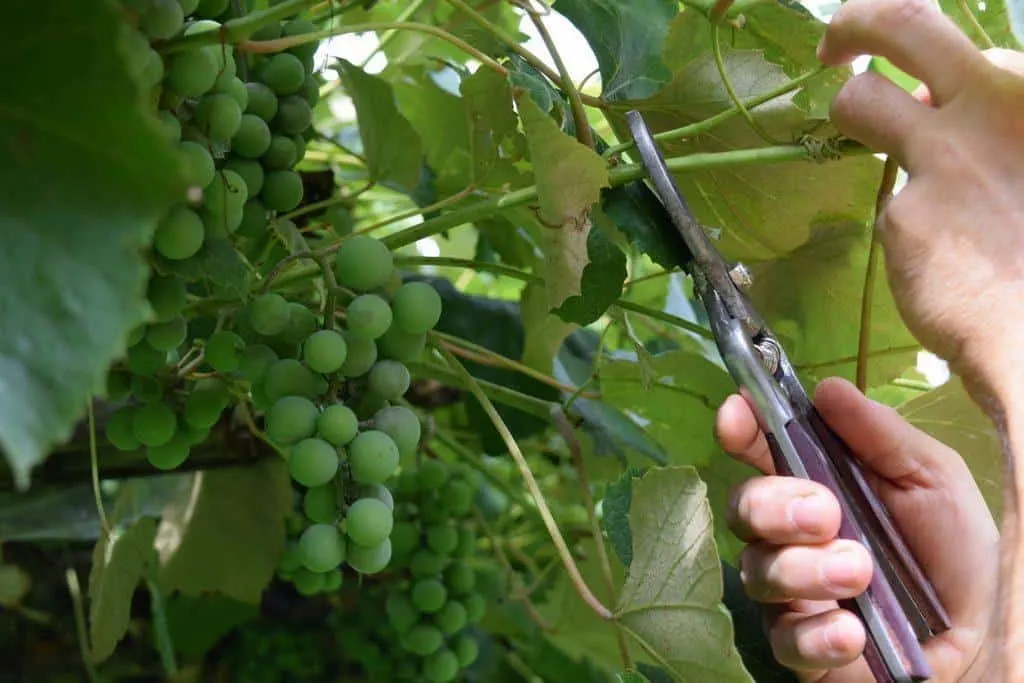
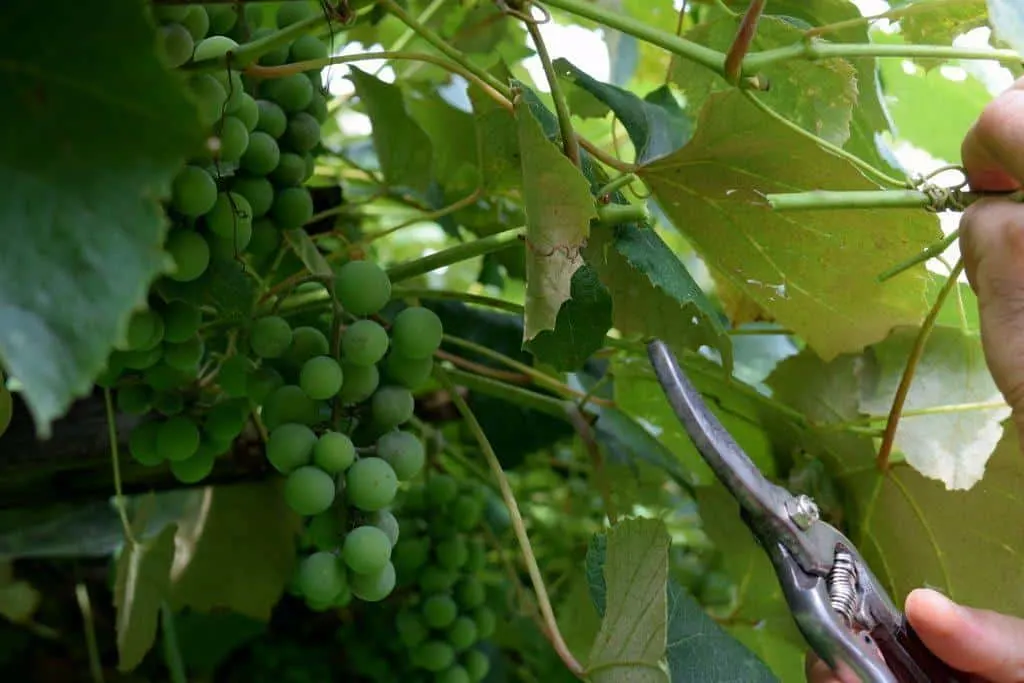
Step 2
Be thorough in your pruning, reaching through the trellis to clip back non-producing vines. These are water shoots that extend from the framework of the grape vine.
In the beginning they were useful in protecting the grape bunches from cold rain and heavy hail. Now they can be clipped back, as they are creating too dense of a canopy.
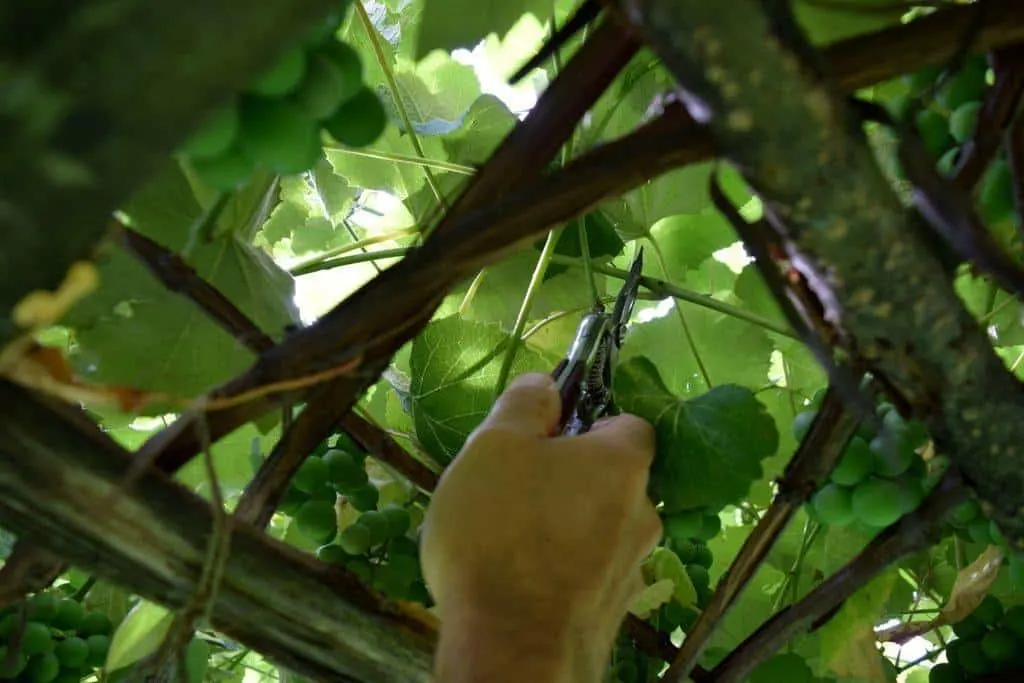
Search for the right vine to cut, then remove it to increase air flow.
Our grape leaves/stems are cut up further and placed on the compost pile along with our kitchen scraps.
If the grape leaves are healthy, they can be saved for later use by means of making pickled grape leaves.
Step 3
Open up the canopy by cutting side shoots to shorter lengths.
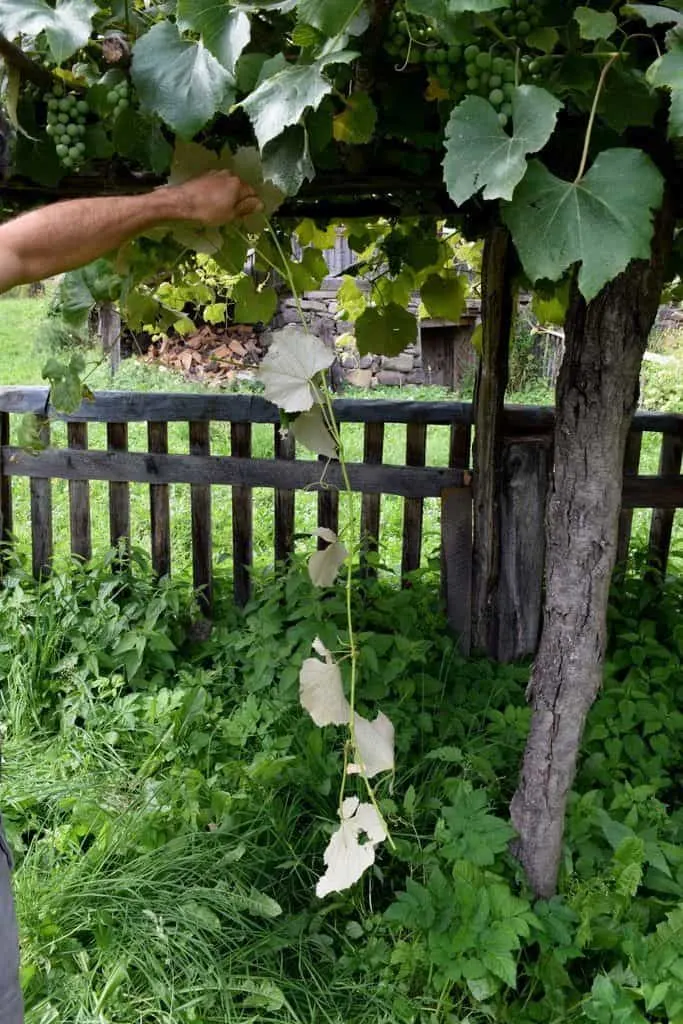
When the grapes are nearing full size, it is important to let more sunlight reach the fruit – this will increase the sugar content and make the bunches more delectable.
If you live in a hotter climate, you may want to wait with going too “airy”, as some varieties are more susceptible to sunburn than others.
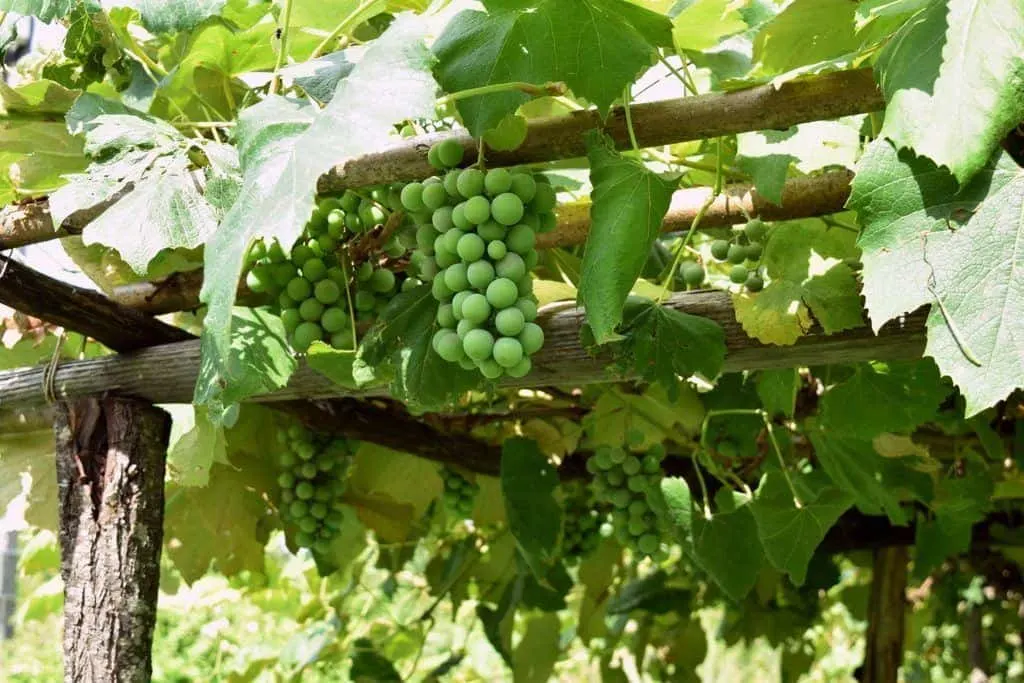
In another month or so, these grapes will be ready to harvest, in all of their dark purple glory.
Tools needed for pruning grapes
Every homestead needs a set of essential tools for gardening and household projects.
Pruners and a small ladder or stool are indispensable items to use and own, indoors or out.
Here’s my article discussing how to pick a quality pair of garden pruners – plus the only brand I would recommend.
These will come in handy when time arrives to prune your orchard or individual fruit trees, come colder weather.
Planning for a bountiful grape harvest?
Once your grapes begin to mature, you’ll want to plan their future.
It is never too early to think about how you can preserve them for winter, give them away as gifts and prevent them from turning into raisins on the vine.
Fresh table grapes are perhaps best plucked from clusters, but one can only eat so many – as with any garden glut of tomatoes, zucchini or apricots.
The rest must be taken care of quickly!
Grapes should be preserved within 24 hours after harvesting, otherwise they can be stored, unwashed, in the refrigerator for up to a week.
Take caution when temporarily storing grapes in the fridge, as they readily absorb odors of onion and cabbage. Wouldn’t that be an odd flavored jam?
Fresh grape juice adds a unique sweetness to smoothies and kids love it too, especially when frozen in a popsicle.
Grape jelly is simply a mix of grape juice and sugar, boiled together and processed in a water bath canner. The perfect pair to any homemade nut butter.
A long-forgotten jar of grape jam will make for the most delicious winter treat.
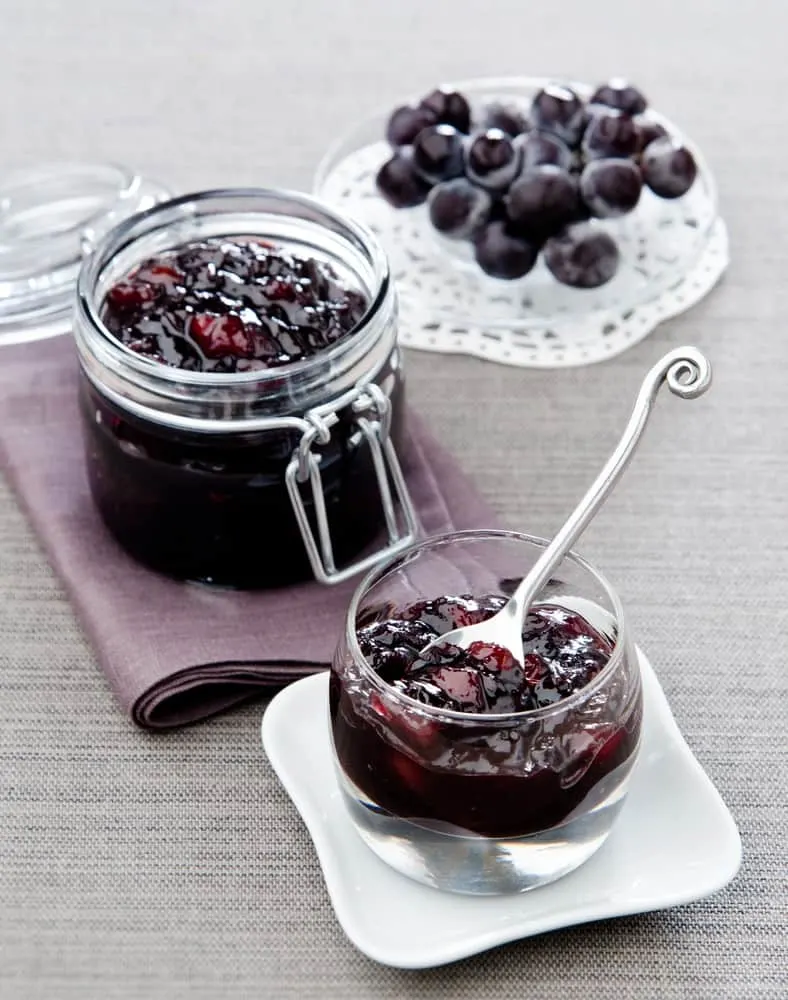
Old Fashioned Grape Jam (No Pectin Added) @ Practical Self Reliance
Pickled grapes are something that honestly we’ve never had the opportunity to try, yet harvest season is right around the corner – we’ll let you know how it goes!
Turning grapes into vinegar and wine
Homestead grape wines are another story altogether. You need to procure all the tools and special equipment long before harvest time to ferment the best bottle of homemade wine ever.
The best way to gain experience in making wine? Take a class, watch several videos or read a book to get started.
The Way to Make Wine: How to Craft Superb Table Wines at Home is a beautiful place to begin your home wine making journey.
If your wine is not successful on the first try, don’t count it as a loss. It will turn into a tart vinegar, ready for making vinaigrettes.
Of course, you can intentionally turn your grapes into vinegar, that will make your harvest last about a year.
Allow just enough filtered light to touch your grapes and the right opportunities for preserving will present themselves.
Pin This To Save For Later

Read Next: How To Prune Basil For Big, Bushy Basil Plants (With Photos!)

Get the famous Rural Sprout newsletter delivered to your inbox.
Including Sunday musings from our editor, Tracey, as well as “What’s Up Wednesday” our roundup of what’s in season and new article updates and alerts.


